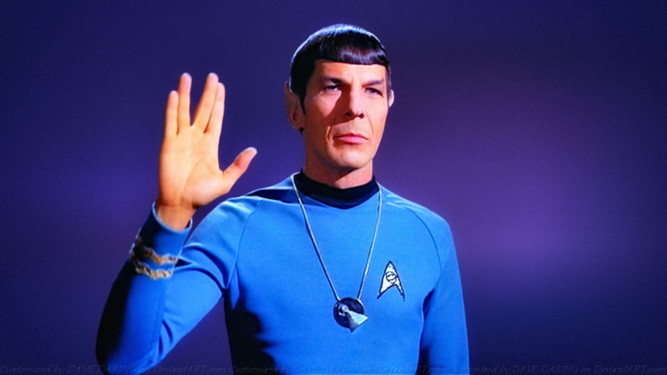
We all knew it was coming but I was very saddened by the death of Leonard Nimoy, the man who created the most enduring sci-fi icon, Star Trek’s Mr Spock.
He died aged 83 after a long battle with chronic lung disease, but what a legacy he has left behind.
I watched the original Star Trek in the Sixties and was immediately hooked. As I got a little older, Spock was my first real crush and for me the true star of the show.
A huge part of the enduring success of Star Trek was the sensitive and understanding way Leonard Nimoy portrayed this complex character.
The half-human, half-Vulcan appealed to those who were a bit different and they identified with his struggle to fit into both worlds. I also found him ridiculously attractive it was because of those seething emotions beneath that calm and logical exterior.
You also have to remember that when the original Star Trek was first aired in 1966, Neil Armstrong still hadn’t set foot on the moon and women were treated as second-class citizens. Racism was rife and the Cold War was at its most bitterly freezing.
There on our screens, however, was a TV show that showed a multi-racial crew with women in positions of power, a Russian officer on the bridge and not only white and black people working together as equals but also green-blooded Vulcans and blue-coloured Andorians. It was truly ground-breaking and inspirational.
The African-American actress Whoopi Goldberg saw communications officer Uhuru played by Nichelle Nichols and shouted to her mother that there was a black woman on the TV who wasn’t just playing a maid. Star Trek inspired Whoopi to go into the movies and she even made regular appearances in one of the many spin-offs “Star Trek: The Next Generation”.
I was lucky enough to interview Leonard Nimoy when he was promoting his second autobiography “I am Spock”. (The first one was interesting, called “I am Not Spock”). I was completely star-struck and both thrilled and relieved that he was such a delightful man. His last screen appearance was as Spock Prime in last year’s Star Trek Into Darkness.
He was also a writer, poet, photographer and even a singer. His kitsch tribute to The Hobbit, a song called Bilbo Baggins, is well worth downloading on YouTube and shows Leonard Nimoy had a wicked sensed humour.
Obviously he will always be remembered for giving us Spock and for that we are very grateful. His last tweet was fittingly both poignant and thought-provoking.
He wrote: “A life is like a garden. Perfect moments can be had, but not preserved, except in memory.”
He added LLAP, which stood for for the Vulcan saying “live long and prosper”.

Enjoy the convenience of having The Sunday Post delivered as a digital ePaper straight to your smartphone, tablet or computer.
Subscribe for only £5.49 a month and enjoy all the benefits of the printed paper as a digital replica.
Subscribe